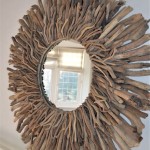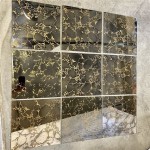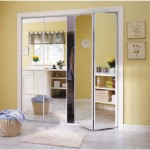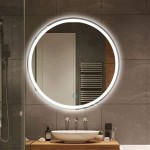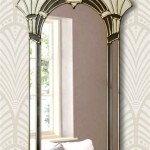Add a Frame to an Existing Bathroom Mirror
Adding a frame to an existing bathroom mirror can dramatically enhance the aesthetic appeal of the space. A simple frame elevates a plain, builder-grade mirror, providing a touch of elegance and personalization without requiring a complete mirror replacement. This project is often surprisingly simple and cost-effective, making it a popular choice for homeowners looking for a quick bathroom refresh.
Choosing the Right Frame Material
The bathroom environment presents specific challenges for framing materials due to humidity and potential water exposure. Selecting a material that can withstand these conditions is crucial for the frame's longevity and appearance. Popular options include waterproof or water-resistant materials like:
- Polyurethane: This lightweight, durable material is highly resistant to moisture and easy to work with. Polyurethane molding comes in a wide array of styles, from simple to ornate.
- PVC: Another excellent choice for bathrooms, PVC is impervious to water and rot. Similar to polyurethane, it’s readily available in various profiles and can be easily cut and assembled.
- Treated Wood: Wood frames offer a classic, natural look. Opt for wood specifically treated for moisture resistance, such as cedar or redwood, and seal it thoroughly with a waterproof sealant.
- Metal: Certain metals, such as aluminum or stainless steel, provide a sleek, modern look and excellent water resistance. However, metal frames can be more challenging to install and may require specialized tools.
Measuring and Preparing the Mirror
Accurate measurements are essential for a professional-looking result. Use a tape measure to determine the exact dimensions of the mirror. Add the desired width of the frame to these measurements to calculate the total area to be covered. Thoroughly clean the mirror surface with glass cleaner to ensure proper adhesion of the frame.
Selecting an Adhesive
The adhesive used to attach the frame must be strong enough to hold its weight and withstand the bathroom's humid environment. Consider these adhesive options:
- Mirror Adhesive: Specifically formulated for adhering to glass, mirror adhesive provides a strong, long-lasting bond. It's typically available as a liquid or double-sided tape.
- Construction Adhesive: A versatile option, construction adhesive can bond various materials, including wood, metal, and plastic to glass. Ensure the chosen adhesive is suitable for bathroom applications.
- Liquid Nails: Similar to construction adhesive, liquid nails offer a strong bond and work well for various frame materials. Choose a variant specifically designed for mirrors or bathroom use.
Assembling and Installing the Frame
Depending on the chosen frame material, assembly might involve mitering corners for a seamless look. Use a miter saw or miter box for precise cuts. Once assembled, carefully apply the chosen adhesive to the back of the frame. Press the frame firmly against the mirror surface, ensuring it's aligned correctly. Use painter's tape to secure the frame in place while the adhesive cures according to the manufacturer's instructions.
Finishing Touches
Once the adhesive has fully cured, remove the painter's tape. Caulk the edges where the frame meets the mirror and the wall using a paintable, mildew-resistant caulk. This creates a finished look and provides an extra layer of protection against moisture. After the caulk dries, consider painting the frame to complement the bathroom's color scheme. Choose a paint designed for use in high-humidity areas.
Considering Alternative Framing Methods
While directly adhering the frame to the mirror is a common approach, alternative methods exist. Frame clips offer a less permanent solution, allowing for easy removal or replacement. These clips grip the edges of the mirror and secure the frame without the need for adhesive. Another option is building a frame around the mirror by attaching it to the wall, overlapping the mirror's edges. This method often requires additional materials and may be more complex than direct adhesion.
Safety Precautions
Always prioritize safety during this project. Wear appropriate safety glasses when cutting materials and using adhesives. Ensure adequate ventilation in the bathroom while working with adhesives and paints. Follow the manufacturer's instructions for all materials and tools. If using power tools, familiarize yourself with their proper operation before beginning the project.

How To Frame Out That Builder Basic Bathroom Mirror For 20 Or Less

Mirror Frame Diy How To Update A Basic Bathroom Our Faux Farmhouse

Bathroom Mirror Frames 2 Easy To Install Sources A Diy Tutorial Retro Renovation

How To Frame A Mirror

Diy Stick On Mirror Frame Sawdust Sisters

How To Add A Frame Your Bathroom Mirror

Diy Bathroom Mirror Frame Without Removing Clips Her Happy Home

Diy Bathroom Mirror Frame For Under 10 O Hayley Blog

Mirror Frame Diy How To Update A Basic Bathroom Our Faux Farmhouse

Easy Diy Tutorial Adding Trim Around A Giant Mirror For Ers

